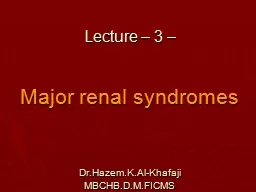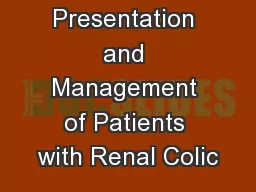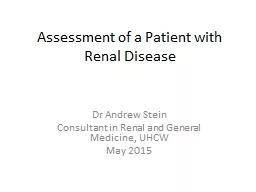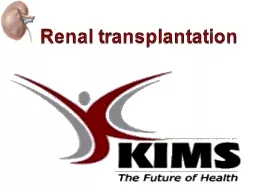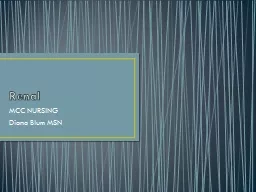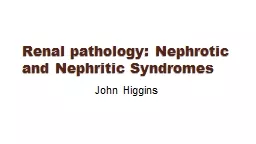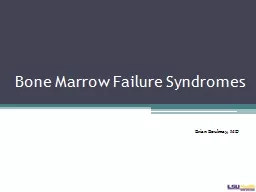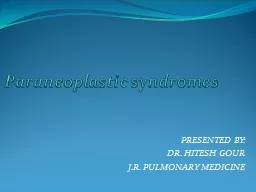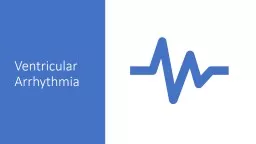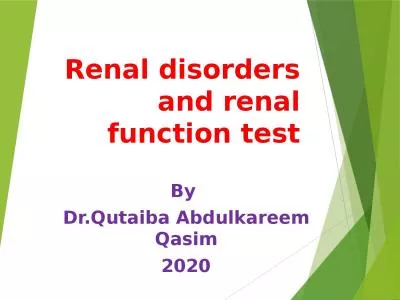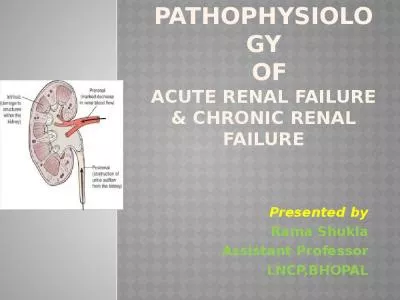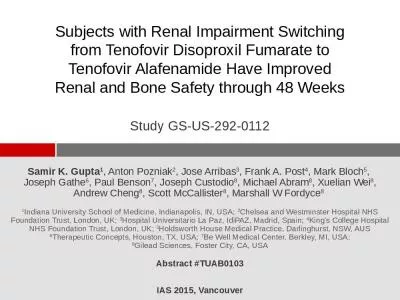PPT-Lecture – 3 – Major renal syndromes
Author : spiderslipk | Published Date : 2020-06-23
DrHazemKAlKhafaji MBCHBDMFICMS The clinical presentation of renal diseases include 1 Nephritic syndrome 2Nephrotic syndrome 3 Acute kidney injuryAKIthe old name
Presentation Embed Code
Download Presentation
Download Presentation The PPT/PDF document "Lecture – 3 – Major renal syndromes" is the property of its rightful owner. Permission is granted to download and print the materials on this website for personal, non-commercial use only, and to display it on your personal computer provided you do not modify the materials and that you retain all copyright notices contained in the materials. By downloading content from our website, you accept the terms of this agreement.
Lecture – 3 – Major renal syndromes: Transcript
Download Rules Of Document
"Lecture – 3 – Major renal syndromes"The content belongs to its owner. You may download and print it for personal use, without modification, and keep all copyright notices. By downloading, you agree to these terms.
Related Documents

